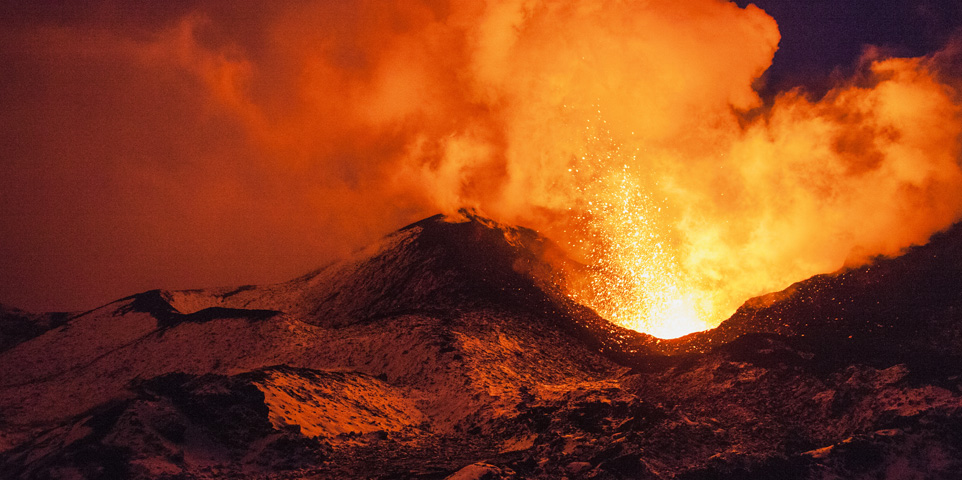A volcanic eruption is one of nature’s most destructive forces, and can result in damage or destruction to homes, businesses, transportation and agriculture.
What's covered
- Most home, renters and business insurance policies provide coverage for property loss caused by volcanic eruption when it is the result of a volcanic blast, airborne shockwaves, ash, dust or lava flow. Fire or explosion resulting from volcanic eruption also is covered.
- Homeowners and business owners’ policies also provide coverage for property damage, vandalism or theft due to looting if the occupants are displaced.
- There is typically a 72-hour waiting period before business interruption coverage kicks in.
- Damage to vehicles caused by lava flow is covered under your auto insurance policy if you have comprehensive coverage, which is optional. Direct, sudden damage to engines from volcanic ash or dust is also covered under most policies.
What isn't covered
- Most home, renters and business insurance policies do not cover damage from earthquake, land tremors, landslide, mudflow or other earth movement regardless of whether or not the quake is caused by or causes a volcanic eruption. Earthquake insurance is available from private insurers as an endorsement to a homeowners policy, and in California from the California Earthquake Authority, a privately funded, publicly managed organization.
- Damage to land, trees, shrubs, lawns, property in the open or open sheds (or the contents of those sheds) is typically not covered.
- The cost to remove ash from personal property is generally not covered unless the ash first causes direct physical loss to personal property. There is also no coverage to remove ash from the surrounding land.
- Business interruption insurance does not kick in unless you have an endorsement to your business owners policy for earthquake and volcanic eruption and:
- there is direct physical damage resulting in suspended operations;
- there is physical damage to other property that prevents customers or employees from gaining access to the business;
- the government shuts down the area, preventing customers or employees from gaining access to the premises.
- Damage that occurs to homes, businesses or vehicles over time due to volcanic dust is not covered under most policies.
- Volcanic Effusion (i.e. volcanic water and mud) is not covered under a typical homeowners, renters or business insurance policy. However it is covered by flood insurance, available through the National Flood Insurance Program.
What to do after a volcano eruption
- Remove ash and dust from the roof of your home as soon as it is safe to do so. Ash is heavy and can cause damage to your roof or gutters if allowed to accumulate.
- Avoid prolonged driving in airborne or accumulated volcanic ash. Volcanic ash or dust can cause severe damage to your engine.
- If your vehicle is exposed to heavy volcanic ash, change your air filter and have the vehicle checked by a qualified auto mechanic as soon as possible.
- Remove ash from your vehicle as soon as it is safe to do so. Prolonged exposure to volcanic ash and dust can chemically damage the paint and glass.
- Do not wipe or brush the ash or dust that accumulates on your vehicle or windows. Volcanic ash is very abrasive and can easily scratch your vehicle. Carefully wash the ash from your vehicle with a stream of water from a garden hose.
Active volcanoes in the U.S.
Active volcanoes in the United States are found mainly in Hawaii, Alaska, and the Pacific Northwest. For example, Mount St. Helens in Washington State erupted on May 18, 1980, causing an estimated $31 million in insured losses, according to Munich Re. The eruption killed 57 people and wrought dramatic changes to the landscape. Scientists with the U.S. Geological Survey and the University of Washington’s Pacific Northwest Seismograph Network maintain constant watch for signs of renewed activity at Mount St. Helens. Of all the active volcanoes in the U.S., the USGS says it is the most likely to erupt again. Should such an eruption occur, projections show that ash from Mount St. Helens could ascend as high as 20,000 feet and drift as far away as California. Searing hot magma from such an eruption would melt ice and snow, possibly triggering flash floods and mudflows.
